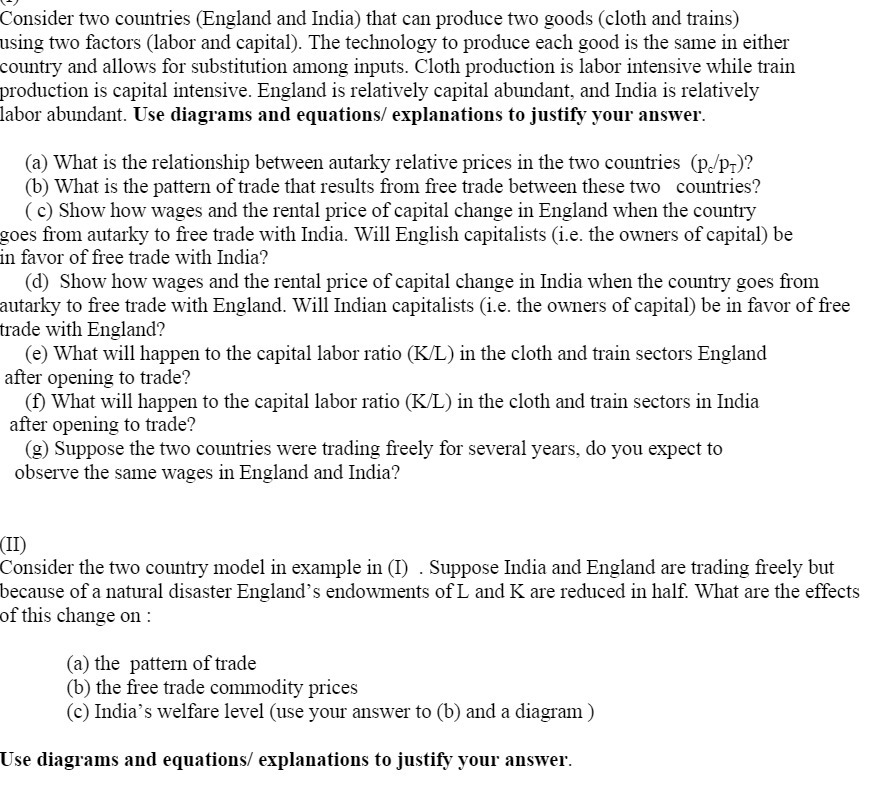Answered step by step
Verified Expert Solution
Question
1 Approved Answer
Consider two countries (England and India) that can produce two goods (cloth and trains) using two factors (labor and capital). The technology to produce each

Step by Step Solution
There are 3 Steps involved in it
Step: 1

Get Instant Access to Expert-Tailored Solutions
See step-by-step solutions with expert insights and AI powered tools for academic success
Step: 2

Step: 3

Ace Your Homework with AI
Get the answers you need in no time with our AI-driven, step-by-step assistance
Get Started


